Mindfulness meditation has been a complete game-changer for me. It’s a simple yet incredibly powerful practice that teaches you to focus on the present moment without getting tangled up in judgment. If you’re new to this, you might be wondering what exactly is mindfulness? At its core, it’s an ancient technique, now backed by a lot of science, that involves paying gentle attention to your breath, the feelings in your body, and the thoughts that pop into your head. It helps you build awareness and a sense of calm from the inside out. Whether you’re feeling stressed, struggling to focus, or just want to feel more connected to your life, mindfulness meditation offers real, accessible tools you can start using in just a few minutes a day.
What Is Mindfulness Meditation?
So, what are we actually doing when we practice mindfulness meditation? Simply put, it’s the practice of intentionally bringing your attention to the present moment and accepting it for what it is. It’s a bit different from other types of meditation that might involve chanting or visualizing. Here, the focus is on being an impartial observer of your own experience—your thoughts, feelings, and physical sensations as they happen.
The practice has roots in Buddhist traditions, but today it’s used in a completely secular way to help with things like stress reduction and mental health. The whole point isn’t to stop your thoughts or empty your mind, but to change your relationship with them.
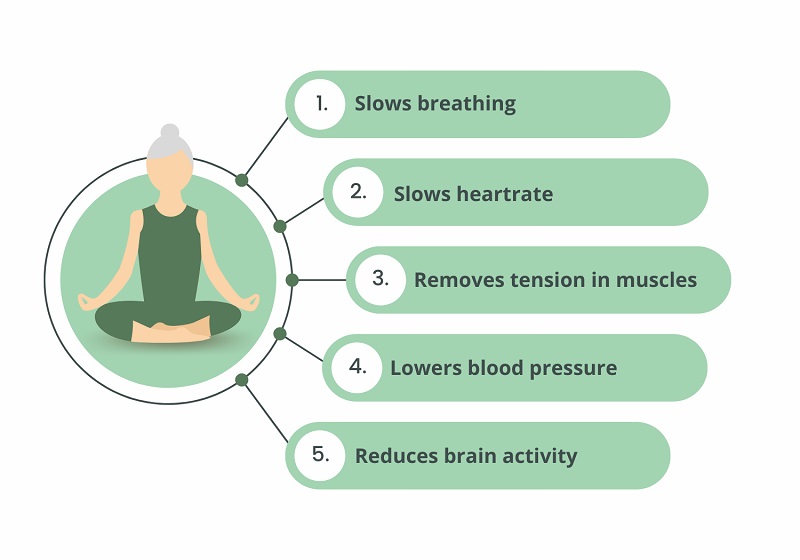
Core Principles of Mindfulness Practice
To really get it, it helps to understand the core principles. I think of them as the three legs of the stool:
- Being Present: This is about tuning into the here and now. So often, we’re lost in thought, worrying about the future or replaying the past. Mindfulness is the simple act of noticing what’s happening right now.
- Observing Without Judgment: This is the tricky part. As you pay attention, you’ll notice thoughts and feelings. The goal is to just see them without labeling them as “good” or “bad.” A thought is just a thought. A feeling is just a feeling. It’s about letting them come and go.
- Cultivating Curiosity: Instead of judging your inner experience, you can get curious about it. “Oh, that’s interesting, my shoulder feels tense.” or “My mind keeps jumping to my to-do list.” This curious attitude keeps the practice light and engaging, turning it into a process of discovery rather than a chore.
Benefits of Mindfulness Meditation
When I started, I was just hoping to feel a little less stressed. But the benefits have been so much broader. And it’s not just me; there’s a lot of research to back this up.
Regular practice can lead to some pretty amazing changes:
- Stress Reduction: This is the big one. Mindfulness helps calm your nervous system and lowers cortisol, the stress hormone. It’s a key part of effective stress management.
- Improved Focus: By training your brain to return to the breath over and over, you’re essentially doing reps for your attention muscle. This has helped me concentrate better at work.
- Better Emotional Regulation: You learn to sit with difficult emotions without immediately reacting. It gives you that crucial pause between a feeling and a response.
- Decreased Anxiety: By focusing on the present, you spend less time worrying about what might happen, which can significantly reduce symptoms of anxiety.
- Increased Self-Awareness: You start to understand your own patterns of thinking and feeling much more clearly. It’s like getting to know yourself on a deeper level.
- Physical Health Perks: Some studies show benefits like lower blood pressure and even an improved immune response.
Preparing for Your Mindfulness Meditation Practice
Getting ready to meditate is simple. You don’t need a lot of gear or a special room. The most important thing is setting the intention to practice. It helps to choose a consistent time and place, but don’t let the “perfect” setup stop you from just doing it.
I remember when I first started, I was so worried about “doing it right.” The truth is, there’s no such thing. It’s a practice, not a performance. Some days will feel easy, and some days your mind will feel like a circus. Both are completely okay.
Choosing the Right Space
Find a spot where you won’t be easily distracted for a few minutes. For me, it’s a corner of my living room in the morning before anyone else is awake.
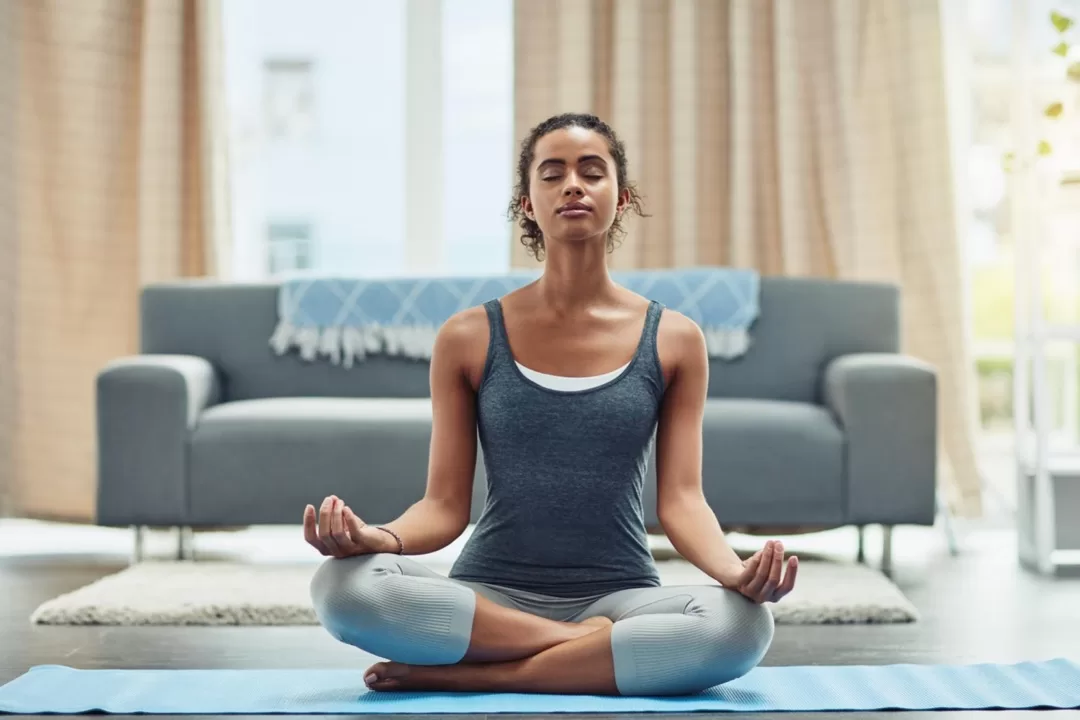
- Quiet is helpful: Try to minimize noise from TVs, phones, or other people.
- Comfort is key: Make sure the temperature is comfortable.
- Keep it simple: You don’t need a fancy altar. A simple chair or a cushion on the floor works perfectly.
While a consistent spot helps build the habit, remember you can practice mindfulness anywhere—on the bus, in a waiting room, or even at your desk.
What You Need to Get Started
Honestly, you don’t need anything but yourself. But a few things can make it more comfortable:
- A Place to Sit: A straight-backed chair, a meditation cushion, or even a folded blanket will do. You can also lie down, but it’s easy to fall asleep!
- Comfortable Clothing: Anything that isn’t tight or restrictive.
- A Timer: Using the timer on your phone (on silent mode!) helps you relax without wondering how much time has passed. There are also great meditation apps out there.
That’s it. The most important tool is your willingness to show up and pay attention.
Step-by-Step Guide to Basic Mindfulness Meditation
Ready to try it? Here is a simple, step-by-step guide to get you started.
- Find a comfortable posture.
- Set a timer for a short period, like 3 or 5 minutes.
- Gently close your eyes or lower your gaze.
- Bring your awareness to your breath.
- Notice when your mind wanders.
- Gently guide your attention back to your breath.
- When the timer goes off, slowly bring your awareness back to the room.
That’s the whole practice in a nutshell. Now, let’s break down each step.
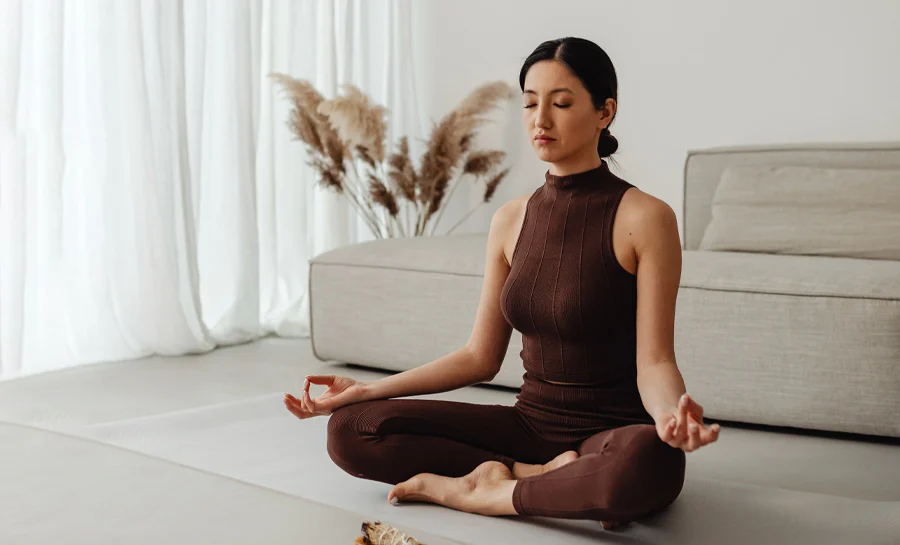
Finding Your Meditation Posture
How you sit matters because it helps you stay alert and comfortable.
- If you’re in a chair: Sit with your back straight but not stiff. Let your feet be flat on the floor. Rest your hands on your lap.
- If you’re on a cushion: Sit cross-legged, elevating your hips with the cushion so your knees can rest on the floor. This helps keep your spine naturally aligned.
- No matter how you sit: Relax your shoulders. Let your chin be slightly tucked. The goal is a posture that feels both dignified and relaxed.
Focusing on Your Breath
Your breath is your anchor to the present moment. It’s always with you.
- Start by just noticing it. Don’t try to change it or control it.
- Pick a spot to focus on. You might notice the sensation of the air at your nostrils, the rise and fall of your chest, or the gentle expansion of your belly.
- Stay with that sensation. When you breathe in, know that you’re breathing in. When you breathe out, know that you’re breathing out. Some people find it helpful to silently say “in” and “out” to themselves.
Working with Wandering Thoughts
Your mind will wander. That’s what minds do. This isn’t a mistake; it’s part of the practice.
The moment you realize your mind has drifted off—to a worry, a memory, a to-do list—is a moment of mindfulness. You woke up!
The instruction is simple:
- Gently acknowledge the thought without judgment.
- Let it go as if it were a cloud passing in the sky.
- Gently return your focus to the sensation of your breath.
This process of noticing, letting go, and returning is the core of the meditation. You’ll do it hundreds of times. Be patient and practice self-compassion.
Duration and Frequency Recommendations
When you’re starting out, consistency is more important than duration.
- Start small: Begin with just 3-5 minutes a day. It might not sound like much, but it builds the habit. There are even guided practices for three minute mindfulness that are perfect for beginners.
- Build gradually: Once you feel comfortable, you can slowly increase your time to 10, 15, or 20 minutes.
- Practice daily: A few minutes every day is far more beneficial than one long session once a week.
Common Mindfulness Meditation Techniques
Once you’re comfortable with basic breath awareness, you can explore other techniques. They all share the same core principles but use different anchors for your attention.
Body Scan Meditation
This is one of my favorites, especially before bed. You lie down and bring your attention to different parts of your body, one at a time. You start at your toes and slowly move up to your head, simply noticing any sensations—warmth, tingling, tightness, or nothing at all—without trying to change them. It’s a wonderful way to connect with your body and release physical tension.
Mindful Breathing Exercises
If you find your mind is extra busy, focusing on the breath in a more structured way can help. You could try counting your breaths from 1 to 10 and then starting over. Or you can explore more specific mindfulness breathing exercises that guide you through different patterns. These techniques give your mind a little more to do, which can make it easier to stay focused.
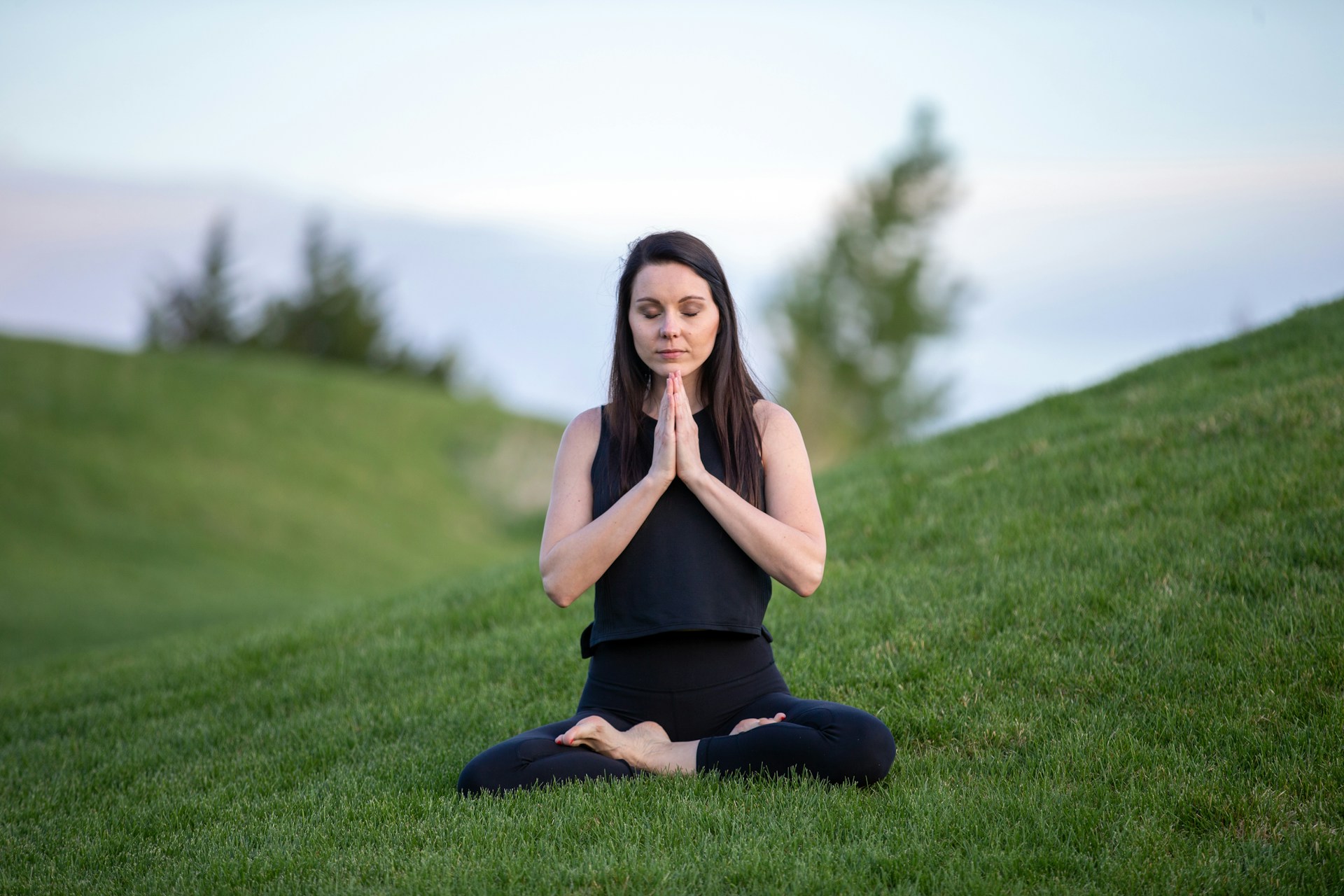
Walking Meditation
If sitting still is a challenge, walking meditation is a great alternative. You find a quiet place where you can walk back and forth a short distance. You slow down your pace and bring your full attention to the physical sensations of walking—the lifting and placing of your feet, the contact with the ground, the movement of your body. It’s a great way to bring mindfulness into daily activity.
Overcoming Common Challenges
Every person who meditates runs into challenges. It’s part of the process. Here are a few common ones and how to work with them.
Dealing with Physical Discomfort
It’s normal to feel an itch, an ache, or restlessness.
- First, check your posture. Make sure you’re supported and not straining.
- If the discomfort is strong, it’s okay to mindfully adjust your position.
- For minor sensations, you can try making the discomfort the object of your attention. Notice its quality, where it is, and whether it changes. You might be surprised by what you learn.
Managing a Busy Mind
“I can’t stop thinking!” is the most common complaint from beginners. Remember, the goal isn’t to stop thinking. It’s to stop being carried away by your thoughts. When you feel overwhelmed:
- Be kind to yourself. A busy mind is normal.
- Return to the breath. It’s your anchor. Return to it again and again.
- Try labeling. Silently say “thinking” or “worrying” when you notice your mind has wandered. This can help you detach from the content of the thoughts.
It can be especially hard when you’re trying to integrate these skills into a busy day, like when practicing mindfulness at work. Just be patient.
I hope this guide gives you a clear and gentle start to your mindfulness meditation journey. It’s not about achieving a perfect state of peace; it’s about showing up for yourself, just as you are, moment by moment.
For more thoughts on wellness and living with intention, feel free to explore more at www.notonetype.org.

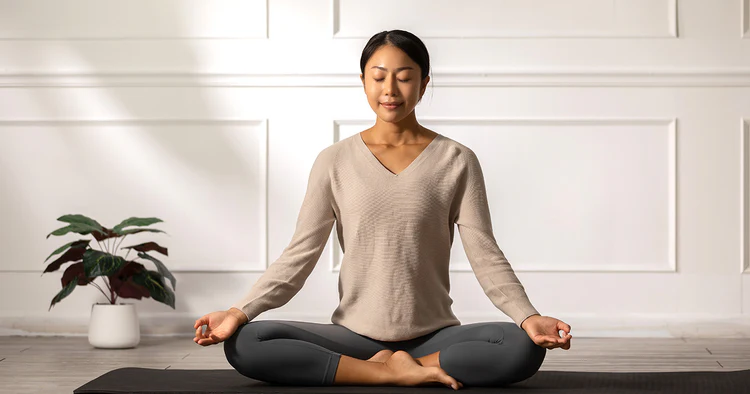
You may also like this
Three Minute Mindfulness: Quick Practices to Ground Yourself Anywhere
Three minute mindfulness practices offer a practical way to stay grounded without needing extensive time...
Nov
Mindfulness Breathing Exercises: 15 Simple Techniques to Reduce Stress and Find Calm
Mindfulness breathing exercises offer a simple yet powerful way to reduce stress, calm your mind,...
Nov
Mindful Relationships: Building Deeper Connections Through Present Awareness
Have you ever been in a conversation with your partner, but your mind was a...
Nov
Mindfulness at Work: A Practical Guide to Reducing Stress and Boosting Productivity
Have you ever finished a workday feeling completely drained, like you were busy all day...
Nov
How to Practice Mindfulness: 8 Simple Techniques for Beginners
It’s easy to feel like life is constantly running on autopilot. We rush from one...
Nov
What Is Mindfulness: Definition, Benefits, and How to Practice Daily
Mindfulness is the basic human ability to be fully present, aware of where you are...
Nov